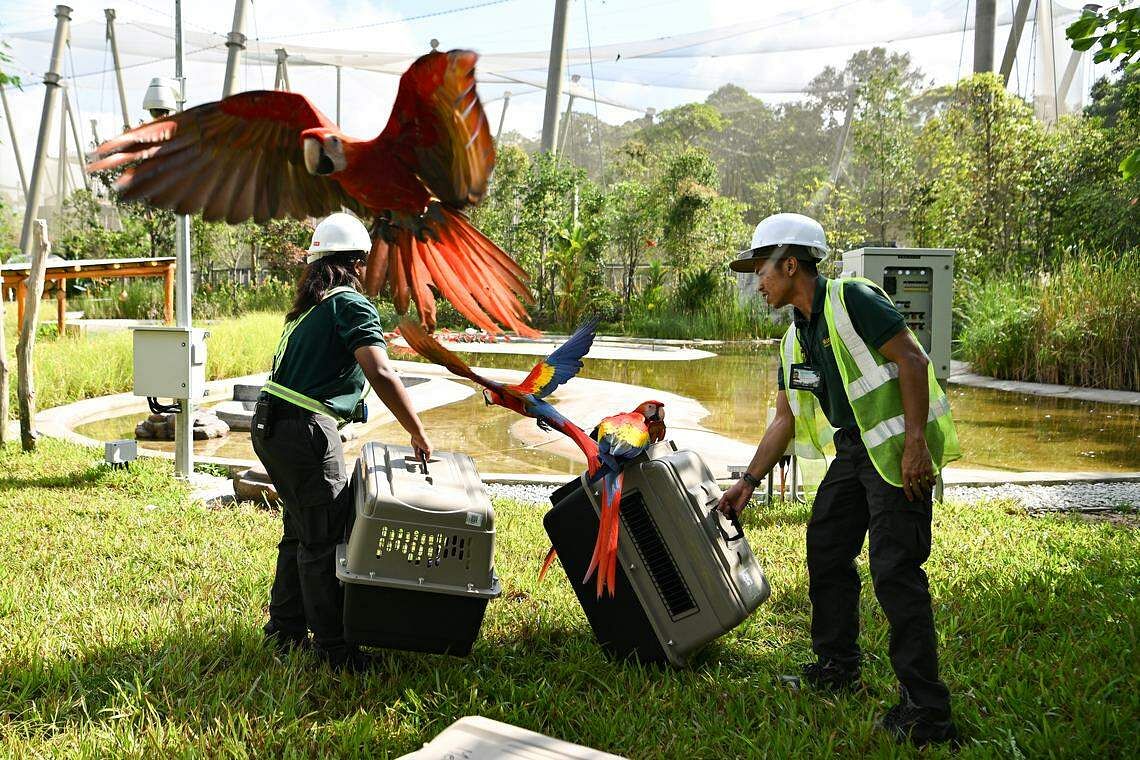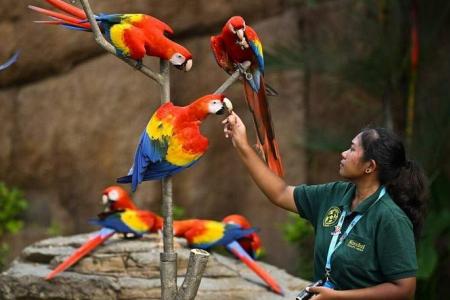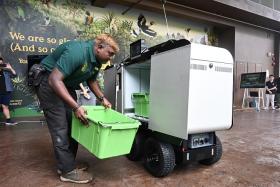75 per cent of Jurong Bird Park’s 3,500 birds moved to Mandai
About three-quarters of Jurong Bird Park’s 3,500 birds have been moved from the old park to Bird Paradise in Mandai.
The remaining birds will be relocated in the coming weeks ahead of the new park’s May 8 opening, said Mandai Wildlife Group on Tuesday.
Speaking to The Straits Times on March 22, Dr Luis Neves, vice-president of animal care at Mandai Wildlife Group, said that birds were being moved from Jan 4 – the day after Jurong Bird Park bade farewell to its last visitors.
He said the order of relocation was largely decided based on two factors – the readiness of new aviaries in Mandai to take birds, as well as the areas that should be freed first in Jurong so that some birds in larger walk-through aviaries there could be placed in these freed-up spaces for keepers to secure these birds more easily on their day of move.
For instance, two black crowned cranes that were previously in Jurong’s Waterfall Aviary were moved to a holding enclosure within the old park, from which keepers retrieved them when the cranes were moved in February.
Prior to the move, keepers at Jurong Bird Park had also started mixing species that were going to live together in Mandai “to make sure that the animals we thought were compatible were actually compatible”, said Dr Neves, adding that this helped to take away a potential stress point for the birds when they were released in Bird Paradise.
To keep the move as stress-free as possible for birds and keepers, he said, some birds were trained to voluntarily enter pet crates or holding areas for their move.
While this was the preferred method of securing birds, certain species such as the long-legged and long-necked storks and cranes were restrained using nets, which were then removed before they were placed in crates by keepers, said Dr Neves.
“This minimises the risk of the bird injuring themselves and makes for a smoother and safer transfer.”
Dr Neves also said the number of birds that required medical attention during the move has not differed from usual operations at the old bird park.
“We always aim for maximum welfare, and no injury whatsoever. Of course, it’s never possible because this is a very large population, and even between them, sometimes they squabble,” he said.
He added that Mandai Wildlife Group’s aim is to have no birds needing medical aid, and “whatever comes our way we are prepared to manage”.

Mandai Wildlife Group said on Tuesday that several species will make their debut at the new park, such as the goldie’s lorikeet, a small and colourful parrot species endemic to New Guinea, as well as the European bee-eater – known for its aerial insect-hunting prowess.
The group added that Bird Paradise will participate in more than 75 ex-situ managed breeding programmes, which refers to initiatives where specimens of threatened species are taken out of their natural habitats and bred under human care to ensure that they do not go extinct.
New species that Mandai Wildlife Group will be partnering other institutions to conserve include the endangered Madagascar Teal, a small brown duck, and the knobbed hornbill, which has a large, curved bill.
Keeper-led programmes and feeding sessions will give the public an opportunity to get up close with some threatened species, and proceeds from feeding sessions will support conservation projects in Singapore and abroad, said the group.
Get The New Paper on your phone with the free TNP app. Download from the Apple App Store or Google Play Store now


